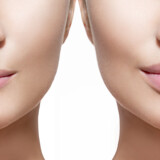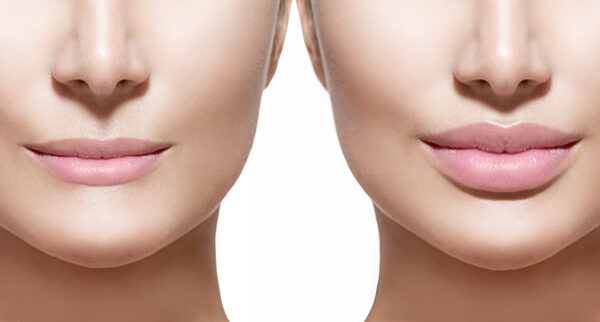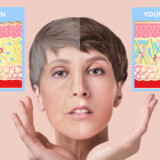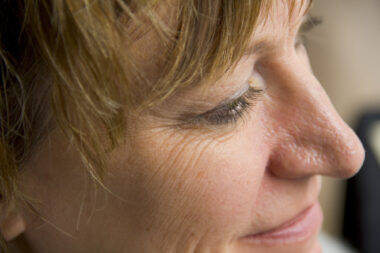Are Dental Hygienists Allowed To Do Botox?


Doctors aren’t the only ones who can administer Botox and similar botulinum toxin products. While rules vary from state to state, medical professionals including dentists, dental hygienists, nurses and others who have completed a Botox and dermal filler training course may be allowed to provide cosmetic injectable treatments.
If you’re a dental hygienist, you’ll have to contact your state’s governing body to determine your eligibility, but this general information may be helpful.
Botox is simple and safe for most patients and can provide remarkable results eliminating or reducing lines and wrinkles, so it’s no wonder that millions of doses are administered each year. Botox is among the most common cosmetic procedures because it works and is minimally invasive, requiring no surgery and only a few minutes in the treatment room.
Injectables including Botox and fillers are popular with health care providers as well. These treatments are low-risk, easy to perform, largely free of side effects or complications, profitable and involve cash-paying patients so there’s no need for billing and collection efforts.
Can A Dentist Or Dental Hygienist Do Botox?
A dentist or dental hygienist may be allowed to administer injectables, but regulations vary by state. In many cases, a trained dental professional can provide aesthetic injectables at a licensed practice. In some states, however, cosmetic injectables are limited to dentists and oral surgeons, meaning that even strictly supervised dental hygienists are prohibited from giving the injections.
Some states also place restrictions on how a provider can use Botox. State law may require that dental professionals only inject Botox and related products when needed for dental reasons, like treatment of clenching, grinding and the jaw disorder TMD. In those cases, no dental professional can administer Botox for cosmetic purposes.
What States Allow Dental Hygienists To Do Botox?
The first state to open the door for dental hygienists to perform Botox injections was Nevada. In that state, hygienists can do injections when directly supervised by a dentist or oral surgeon.
About half of states allow dentists to do Botox for cosmetic reasons, and rules in those states for dental hygienists vary. States where dentists can do aesthetic Botox include, when last we checked:
- Wisconsin
- Maryland
- Iowa
- Florida
- Connecticut
New York also allows dental practices to provide this service with significant restrictions.
In some states, there are no specific rules about whether hygienists can provide dermal fillers or botulinum toxin injections. Regulating bodies in those states either take no action regarding the practice or evaluate cases individually when they come up.
What Training Does A Dental Hygienist Need To Do Botox?
As with other aspects of this issue, whether training and certification are required for dentists and dental hygienists who want to administer Botox and dermal fillers varies from one state to the next. In most cases, certification is required.
There may be a requirement that the certification course include specific things, like how to administer the injections, how to handle side effects and more.
Dentox provides Botox and dermal filler training and certification. Consider attending one of our in-person one-day classes around the nation, attend live online training or choose recorded on-demand training that you can view anytime and anywhere. Whatever option you choose, you’ll get the same high-quality instruction from Dentox founder Dr. Howard Katz.
To learn more, reach out now – or register right away for the class that fits your needs.
Understanding The Difference Between Botox, Fillers And More


Botox and dermal filler usage is spiking recently because so many of us have been looking at ourselves in our phones and computer monitors more often than ever, and we don’t like the aging image we see looking back. Patients are telling injectors that they’re continuing to use Zoom and other video conferencing software even as the pandemic eases, and they’re wanting to see a more youthful version of themselves on the screen.
Botox usage was already increasing dramatically, even for younger people. Between 2010 and 2018, usage rose 35 percent, according to statistics from the American Society of Plastic Surgeons. But not everyone should be administering the shots, and not every shot is the same. Patients need to select the right practitioner and make the right product decisions.
Relaxer or Filler? There Are Big Differences
Injectables come in two categories: neuromodulators like Botox and dermal fillers.
Neuromodulators or relaxers are often referenced by the most common brand name, Botox. These injections inhibit nerve communication, relaxing muscles to soften wrinkles and lines that are created from repeated muscle movements. Neuromodulator injections work great on brow lines from frowning and crow’s feet from smiling.
There are 3 primary neuromodulators on the market:
- Botox is the original neuromodulator, has been approved by the FDA for over 20 years and is the only product approved for medical purposes like excess sweating and migraines.
- Dysport is a similar botulinum toxin product, but research indicates that it may relax muscles quicker.
- Xeomin is made without certain proteins that can cause an antibody reaction in some people with autoimmune disease. While the reaction probably doesn’t hurt anything, it can decrease the effectiveness of the neuromodulator if it happens.
Fillers are something completely different and do as the name says – they fill sunken or hollow spaces to add volume and make the patient’s skin look plumper and more youthful. Many contain hyaluronic acid, but there are other fillers as well. These products can be used for restoring fullness under the eyes, adding structure to cheekbones, filling crevices and deep lines near the mouth and more.
A special category of dermal fillers, biostimulatory fillers, work inside the body to create new collagen. Some injectors and patients prefer them to hyaluronic acid filler, especially at the temples or jawline.
Filler brands include Juvéderm Voluma, which is viscous and is good for creating a lifting effect as well as Volbella, which is more liquid and works better for small areas. There are a range of other choices too.
Who Can You Trust To Administer Botox And Fillers?
The most important factor for a patient seeking neuromodulator or filler injections is choosing the right injector. That could be a well-trained doctor, dentist, nurse practitioner or other medical professional.
The key is that the chosen injector be well-trained.
When an injector doesn’t have complete training, patients end up with bad results that may include bulging, facial paralysis, a frozen face or even blindness. Well-trained, experienced injectors know where to place injections and where to avoid, plus they’re trained in managing adverse effects that may happen. Beyond just doing the shots, they can respond to any undesired outcomes.
Dentox offers quick but thorough hands-on Botox and dermal filler training for medical and dental professionals. When patients choose a Dentox-certified injector, they know they’re getting someone who has demonstrated their skills to Dr. Howard Katz, America’s most experienced injectables instructor.
If you’re a medical or dental professional seeking injectables certification, reach out to Dentox now – or sign up for training. Programs are available online, on demand and in person around the nation. Every Dentox training program is efficient, designed to provide practical skills and backed by ongoing support from Dr. Katz.
Botox For Palatal Myoclonus Or Tremor: Small Doses May Do The Trick


Palatal myoclonus is a rhythmic jerk of the soft palate that can cause an annoying clicking sound in the ears as the Eustachian tubes open and close. Now classified as a tremor rather than myoclonus because of its electrophysiology, this condition is most commonly caused by nerve damage that results from stroke, multiple sclerosis or even a tumor. It can develop a year or more after a stroke.
Research has found that this is among the involuntary movement types that can be successfully treated with Onabot-A, usually called by the brand name Botox. In the case of Botox for palatal myoclonus, very small doses may be all that are necessary to control symptoms for months.
More About Botox for Palatal Myoclonus
Treating with Botox for palatal myoclonus usually requires EMG guidance. Injections are placed into the soft palate in small doses at specific locations. Injections placed in the tensor-veli-palatini muscle at about 2.5 U usually work for the clicking sound while a similar dosage on each side of the uvula into the levator-veli-palatini muscle can control the movement of the palate.
There is a low risk of swallowing problems following treatment with Botox for this condition, but the risk can be minimized by first injecting a low dosage and increasing it gradually if necessary in future visits. It is important to note that in some cases the injections won’t work at all, and this is often because the palatal myoclonus has a psychological origin and should be treated with psychotherapy.
Improve Patient Lives… And Your Practice
When you’re trained in therapeutic uses of Botox, you can improve patient lives by helping them resolve stubborn and uncomfortable muscle conditions while enhancing the bottom line of your practice. For training in both medical and cosmetic uses of Botox, trust Dentox and founder Dr. Howard Katz. Reach out or sign up now for training on demand, online or in person around the United States.
Fine Line Injections? You Have A Range Of Injectable Treatment Options


Cosmetic procedures can’t turn back the clock, of course, but they can make us look like we haven’t ridden around the sun quite so many times.
Many of us can age more gracefully with the help of fine line injections. There are many options on the market, and they don’t all work the same way. While you could try dermal fillers or perhaps laser skin tightening, let’s focus on neuromodulators for a moment – those wrinkle-reducing shots that relax away lines. While Botox is both the most common neuromodulator and sometimes a blanket term used for all botulinum toxin A neurotoxins, there are four on the market today:
Botox
The grandfather of all neuromodulators and the first on the market, Botox has been FDA-approved since 2002. Even patients who get other brands often say they’ve had “Botox treatments.” Injectors trained before 2009 were trained only on Botox. The FDA approved it for use on the lines between the eyebrows, horizontal forehead lines and crow’s feet, but it is widely used for other kinds of wrinkle and fine line injections. It can also be used medically for TMJ clenching and pain, sweating, muscle tension in the shoulders and neck, migraines and more. For cosmetic purposes, results happen subtly within a day or two and improve for up to a week or longer. Results last an average of 3 to 4 months, but this varies widely.
Dysport
Dysport has been gaining patient recognition in recent years and is sometimes asked for by name. Dysport has FDA approval only for the glabella lines of the forehead, but it is used off-label for other cosmetic purposes. Some medical professionals report that Dysport diffuses – or spreads – more than other products so it can cover a large area better than Botox. This spreading can cause side effects if used incorrectly. As with Botox, results last 3 to 4 months or more, but they start to become visible more quickly, some doctors observe. Each unit generally costs less than Botox because the product is more diluted, but more units may be required, making overall treatment cost comparable.
Xeomin
Xeomin is a type of botulinum toxin A injectable that varies from the others in an important way: It contains only the toxin and nothing else. The others contain protective proteins and additives. Because there are no additional proteins, the product may be less likely to cause an allergic reaction, especially in those with autoimmune disorders. Xeomin is only FDA approved for frown lines but is used by injectors in much the same way as Botox and Dysport. It can also help with twitching eyelids, neck muscle spasms and other muscular irregularities. Maximum benefit is visible at around 30 days. Some medical professionals say that it wears off quicker than Botox or Dysport while pricing is similar.
Jeuveau
Approved for cosmetic use in 2019, Jeuveau is intended for frown lines but used for other purposes including fine line injections as well. The brand is a bit less expensive and targets millennials. Whether it can take over a significant share of the market isn’t yet known, but it seems to have similar effectiveness and duration to the other products while costing a bit less. Millennials tend to be early adopters in general, according to experts, meaning that the product should catch on quickly if it catches on at all.
A well-trained injector can make sure a patient is a good candidate for neurotoxin injections and help the patients decide which product or products is right for their needs. Dentox trains doctors, dentists, nurses and others to inject neuromodulators and dermal fillers. Each hands-on class is led by company founder Dr. Howard Katz, the leader in injectables training. Classes are available in person, live online and on demand. To learn more about becoming a certified injector with Dentox training, reach out now or sign up for a quick, thorough hands-on training class.
Urinary Incontinence Is More Common Than You Think, And Botox Is Among Proven Solutions


Urinary incontinence is the most common bladder control problem, according to the U.S. National Institute of Diabetes and Digestive and Kidney Diseases. This lack of bladder control can seriously impact life by causing disruptions to the normal course of activities, embarrassment, impact to social relationships and decreased ability to work for a living. But Botox and other solutions can help.
Incontinence should not be considered a disease, however, and instead be looked at as a symptom of a larger issue, according to experts. Underlying causes can include aging, general poor health, being overweight, smoking and diseases including MS. Prostate problems can cause incontinence in men. Women can experience incontinence because of pregnancy, childbirth and menopause, all things that weaken the muscles of the pelvic floor. It can also be a side effect of radiation treatments.
The precise number of people who experience urinary incontinence isn’t known since many cases are not reported, but some organizations believe at least 10 percent of the population has the problem. Others believe the number is much higher.
Understanding Incontinence Better
There are several types of incontinence, and the treatments vary depending on the cause and symptoms. Among the types are:
- Urge incontinence, the intense need to go to the bathroom immediately. This can be caused by an infection, diabetes or a neurological disorder. This type responds well to Botox treatment because it involves sudden tensing of bladder muscles in many cases, which Botox injections can lessen or eliminate.
- Stress incontinence, caused by weak pelvic floor muscles and occurring when laughing, sneezing, exercising, lifting or having sex.
- Overflow incontinence, the failing of the bladder to empty fully so that small amounts drip over time.
- Mixed incontinence, a combination of two or more types.
- Total incontinence, when the sphincter muscle no longer works and urine flow cannot be controlled at all.
- Functional incontinence, a rare condition that happens when arthritis, cognitive decline or other conditions cause someone with normal bladder control to be unable to get to a bathroom when needed.
While the primary symptom of incontinence of any kind is leakage of urine, the condition can also be caused by a urinary tract infection, which may have the following systems:
- Pain during urination
- Pink, red or dark urine
- Urine odor
- Back or abdominal pain
- Frequent urination
- And more.
Treating Incontinence
A doctor can determine the cause of a patient’s incontinence and create a treatment plan based on a physical exam and review of history and symptoms. Tests may be conducted as well. Some cases clear up on their own over time.
Experts point to a wider range of treatment choices than ever before. In many cases, a doctor will suggest lifestyle changes, bladder control training and pelvic floor exercises. If these things don’t work, medication might do the trick. There are also medical devices, biofeedback treatments and surgical procedures that may help.
Many patients are surprised when their physician recommends Botox for incontinence or overactive bladder. When Botox is used for bladder control, the treatment is injected at a clinic or medical office, and most patients have few or no side effects.
The injections don’t cause any pain, but there can be some brief discomfort similar to cramping. Most patients get improvement in their symptoms in only a few days, and the results can last up to 6 months. Urine retention can happen, so the procedure is not recommended for men with enlarged prostates.
If you’re a medical professional interested in exploring this use for Botox and many others, consider attending a Botox and dermal filler training seminar from Dentox, the leader in single day, in-person injectables training. Online and on demand training is also available. Register for a seminar near you or reach out for more information.
Botox For Rest Tremor: Another Alternative For This Parkinson’s Symptom


Rest tremor is a Parkinson’s disease (PD) symptom that happens when muscles of the hands, arms or legs are relaxed. In many cases, the fingers or hands are the only parts of the body impacted. The condition is associated with altered activity in two brain circuits: the basal ganglia, which are impacted by the depleted dopamine levels associated with PD, and the cerebello-thalamo-cortical circuit.
Botox for rest tremor is an alternative to medications that may or may not work. This condition is a stubborn sign of PD that often doesn’t respond to treatment, so patients may have to try more than one approach to see symptom reduction.
More About Botox For Rest Tremor In PD
The standard for treating rest tremors is levodopa, a medication that is converted in the body to dopamine to reduce PD symptoms. The effectiveness of Botox for rest tremor isn’t well-proven by published data, but a few studies have suggested that injections of Onabot-A, sold under the name Botox, or Incobot-A, a similar product sold under the name Xeomin, can help.
The method of treating with Botox for resting hand and arm tremors involves injecting the product into the forearm muscles. Finger and hand weakness with this treatment is common, however. Improvement may only be modest and may not be good enough to tolerate the weakness in some cases. A study of 34 patients indicated that Xeomin for rest tremor may provide the greatest symptom relief with the lowest level of unintended consequences.
Offer Patients More Hope
Rest tremors are among the most obvious symptoms of PD and often occur early in the disease’s progress. When you train at Dentox, you learn about both medical and cosmetic uses of Botox to help patients get the results they need. Reach out now or sign up for Dentox injectables training – and get the skills to give patients additional hope while also increasing your practice’s profits.
Will At-Home Conotoxin Products Replace Botox Injections


Conotoxins – or cone snail venom products, as they are also called – are starting to get attention as a potential at-home replacements for Botox. But can these creams and serums really have the same impact as professionally injected Botox shots? We’re skeptical. Still, conotoxins are a development in the aethestics industry that bears watching.
American consumers are willing to go to extremes to fight wrinkles and have younger, more toned skin. But what about snail venom? If a product exists that can mimic the positive impact of Botox but can be used at home with no medical or aesthetics office visit necessary, it could be a game-changer. So far, however, conotoxin products haven’t taken the world by storm – and consumers aren’t exactly clamoring to get them.
What Are Conotoxins?
Some are calling conotoxins the secret Botox alternative because many people haven’t heard about them yet. Also referred to as MU-conotoxin, conopeptide or snail venom, conotoxins are synthetic compounds that mimic the effects of the venom from a specific type of snail to relax facial muscles. The result is an instant but temporary smoothing of lines and wrinkles.
Snails are not harvested to make products that contain conotoxins, so no creatures are harmed and there’s no negative environmental impact to the southwestern shores of Australia, where cone snails are native and use their venom to paralyze enemies so they can consume them.
How Do Conotoxins Work?
Conotoxins relax away expression lines and wrinkles. A neuropeptide found in natural cone snail venom as well as the lab-created synthetic product blocks NAV1 receptors on nerve endings and therefore inhibits muscle contraction. The structures under the skin relax, making the face look less wrinkled and more youthful. Just 2 hours after topical application, wrinkles are visibly reduced, according to promoters of the limited clinical research that’s been done.
What Are The Benefits Of Cone Snail Venom?
Those who purchase over-the-counter synthetic cone snail venom products may get quick reduction in the look of deep wrinkles, crow’s feet and other lines. A 2-week study conducted by AMA Laboratories found that women who used one such product got a 64 percent reduction in visible wrinkles. Some got a reduction of 90 percent or more. That’s better than many other topical creams, and it’s better than results from 6 months of treating facial skin with retinol, according to some experts.
But it isn’t better than Botox, which can provide a dramatic reduction in wrinkles that lasts for weeks or months from just one in-office treatment. Botox is also specifically targeted by experienced injectors to the sites that can do the most good rather than used at home by someone who may not be trained in how to get the most from the product. When combined with dermal fillers to reduce the creases left by deep, longstanding wrinkles, Botox results can be even more remarkable.
Not much is known about the long-term benefits of conotoxins or potential cumulative side effects. There are no proven long-term benefits, however it may work to train muscles over time to relax. This benefit is also possible with repeated use of Botox.
So what should a patient with facial wrinkles and lines do? The best bet is the aesthetic treatment proven through years of research and used by millions of patients. To reduce the signs of aging, turn to Botox.
Dentox teaches medical and aesthetic professionals how to administer Botox injections safely and without side effects or waste. To learn more about Dentox courses with Dr. Howard Katz, reach out for details. You can also sign up now for an in person seminar at one of several locations around America – or choose a live online or on demand course.
Botox And Other Injectables Booming, Thanks To Zoom And Selfies


For Botox injectors, the rise of selfie culture and the increase in video calls and online conferencing are great for business. While Botox was once considered a last-ditch effort to save middle-aged faces from the ravages of time, today men and women of all ages are turning to injectable cosmetic treatments. Teen girls want to look like the hottest social media influencers while boys and men are increasingly wanting to stop aging before it starts while enhancing their lips and jawlines.
An astounding 14 million nonsurgical cosmetic procedures were conducted around the world in 2020, an increase of more than a million from 2018 statistics. Even a global pandemic didn’t appear to hold numbers down.
Worldwide sales of noninvasive cosmetic treatments stand at around $60 billion, and that could triple or more by 2030, according to analytics firm Research and Markets. Much of that growth will be from injectables like Botox and dermal fillers.
The reason for the astounding growth? High-resolution Zoom meetings and other video calls plus the prevalence of selfies among some groups in society get much of the credit. Some apps have filters that help users see what they might look like with some enhancements to their face. The contrast between what they see on a video call and what they see through a filter can be dramatic and unsettling for some people.
Stats Prove Recurring Revenue For Injectors
In 2020, there were about 2.4 million injectable procedures performed even with some medical and aesthetics offices closed due to the pandemic. In Germany, there were about 700,000 such treatments in 2020. Demand reached half a million procedures that year in Brazil, even though people generally have less disposable income there.
In Asia, demand is particularly strong for what’s called “prejuvenation” – the desire to stop lines and other signs of aging before they start by having cosmetic procedures in the teen years and early 20s.
These statistics mean recurring revenue for the medical and dental offices, spas and aesthetic treatment centers around the globe that offer injectables. Because Botox and dermal filler treatments must be done every few months, satisfied clients will return again and again, and a younger start means more business for injectors.
Investors have put more than $3 billion into more than 400 aesthetic clinics in the last 5 years, according to consulting firm McKinsey. American pharmaceutical company AbbVie paid $63 billion in 2020 for Allergan, the company that makes Botox and filler Juvederm and controls almost half the injectables market.
New products from companies in South Korea, France and elsewhere threaten Allergan’s dominance but only serve to expand the demand for and availability of injectables.
Some fillers now contain hyaluronic acid, an ingredient familiar to many people who use skincare products and therefore less off-putting than Botox and other fillers. Fillers are even being made from a patient’s own blood or stem cells, also more appealing to some consumers.
One caveat, however: The increasing desire for injectables among younger people has caught the attention of regulators in some jurisdictions. In England, for example, the government has banned treatments for those under age 18 and now requires that all injectors to get a license. In the United States, each state makes its own rules for Botox and fillers, which vary widely.
If you’re an aesthetic or medical professional ready to get your share of the injectables market, Dentox can help by providing Botox and dermal filler training on your terms – in person, live online or on demand. All Dentox training is hands-on even when conducted remotely and is taught by America’s most experienced injectables instructor, Dr. Howard Katz. Learn more or sign up for Dentox training now.
Botox and other injectable cosmetics are booming

Video-conferencing and the selfie culture are behind the craze

Cosmetic procedures used to be the preserve of middle-aged women and often involved surgery. Today they are increasingly sought by girls who want the photoshopped faces of their favourite social-media influencer, and by a growing number of men wishing for fewer wrinkles, fuller lips and sharper jawlines. Globally, more than 14m nonsurgical procedures were conducted in 2020, even amid the pandemic, up from fewer than 13m two years earlier. Increasingly, scalpels are giving way to syringes.
Research and Markets, a firm of analysts, reckons that the global sales of non-invasive aesthetic treatments, currently around $60bn, could more than triple by 2030. A large part of that growth will come from injectables. These include Botox and other substances that freeze facial muscles, as well as dermal fillers which plump softer tissue. Demand has been fuelled by the proliferation of selfies and, during the pandemic, high-resolution video-calls. Snapchat and Instagram filters give users a glimpse of what they could look like with a filler-generated “liquid facelift”. The contrast with what they see on unadorned Zoom can be stark.
In America 2.4m injectable procedures were carried out in covid-hit 2020, roughly one for every 100 American adults. About 700,000 such treatments were performed on Germans, not renowned for an obsession with looks. Brazilians, who are famously beauty-obsessed but much poorer, subjected themselves to around 500,000. Demand for “prejuvenation” work is especially strong in Asia, where younger patients (for, despite the convenience these are still medical procedures) want to pre-empt a craggy visage before any lines actually appear. Since injectables have to be topped up every few months, they guarantee producers of the substances and clinics that administer them a source of recurring revenue. The younger the customer starts, the better for business.
According to a report by McKinsey, a consultancy, over 400 aesthetics clinics, which administer injectable treatments (among others including things like laser fat removal) raised more than $3bn from investors over the past five years. In 2020 AbbVie, an American pharmaceutical firm paid an eye-popping $63bn for Allergan, which has controlled nearly half the market for injectables since it launched Botox for aesthetic use two decades ago and Juvederm, a dermal filler, a few years later.
New products are beginning to threaten Allergan’s dominance. Hugel, a South Korean company, now has a rival offering that is half the price of Botox. It is eyeing the Chinese market, where the stuff is still less common than dermal fillers. Ipsen, a French drugmaker, and Merz Pharma, a German one, also make Botox-style injectables. Ipsen’s Dysport has done well in Turkey and Russia. Merz’s sales are growing briskly in the emerging economies of Asia and Latin America.
Some modern dermal fillers, meanwhile, are formulated with ingredients such as hyaluronic acid that are typically found in mild skincare products. That is less offputting to potential customers than Botox, which is derived from a toxin that occurs naturally in spoilt sausages. Other new treatments are dispensing with foreign substances entirely—though this doesn’t always seem all that more appealing. Certain cosmetic clinics offer to inject stem cells from a patient’s own fat into their face, or platelets from their blood to rejuvenate the skin.
There is a wrinkle. The injectables craze, especially among youngsters, worries regulators. Botox is a prescription drug in most places but many dermal fillers are not. “Treatments are often trivialised on social media and people don’t understand the full ramifications of what can go wrong,” says Tijion Esho, a cosmetic surgeon in Britain. Misplaced injections can lead to abscesses or, in some cases, necrosis. An outcry from doctors and victims of botched procedures forced the British government to announce in February that it would require a licence for people administering nonsurgical treatments. England has already banned them for under-18s.
Botox Dynamic Wrinkle Training

 Patients who are unhappy with their look due to developing dynamic wrinkles are likely to ask you whether there is anything you can do to improve their appearance.
Patients who are unhappy with their look due to developing dynamic wrinkles are likely to ask you whether there is anything you can do to improve their appearance.
Dynamic wrinkles may be treated with Botox, which is the most convenient and least expensive alternative. When your patients use Botox, they can keep their wrinkles at bay for three months. Is it, however, the only option? Here’s all you need to know about the situation.
What Makes Dynamic Wrinkles Different
Dynamic wrinkles and static wrinkles are the two basic forms of wrinkles on the face. Static wrinkles occur when volume and collagen in the skin are lost, whereas muscle contractions induce dynamic wrinkles. As a result of this crucial distinction, treating dynamic wrinkles differs significantly from treating static wrinkles. Among the more common types of static wrinkles are the following:
- Sagging cheeks and jowls
- Drooping eyelids
- The wrinkles around your mouth
You might surgically tighten your patients’ skin to restore their youthful contours. Noninvasive injectable dermal fillers can increase volume and fill in lines in static wrinkles. On the other hand, dynamic wrinkles cannot be reduced by just treating the skin. Therapy must focus on the underlying problem of the facial muscles, which are implicated. The following are examples of dynamic wrinkles:
- Small lines on the outer portion of an eye known as Crow’s Feet
- Lines between the eyebrows known as frown lines
- Lines on the forehead known as forehead wrinkles
Using Botox to Reduce the Appearance of Dynamic Wrinkles
There’s a solid reason why injectables are so popular in the United States. The procedure does not require any anesthetic or cutting, and the results are superb. They’re a terrific choice for those who have a lot on their plate. However, the main drawback is that they only last three to twelve months on average before being redone.
Botox’s ability to cure dynamic wrinkles has made it a household brand. It works by disrupting nerve impulses and preventing face muscles from contracting using a secure version of botulinum toxin. The therapy temporarily eliminates dynamic wrinkles and gives the skin a more youthful look by relaxing these muscles and restricting their activity.
For treating dynamic wrinkles, Botox is the best thing to do. Many patients choose to come in several times a year to look their best because they are so happy with the results. The effects of the injections don’t show up until about a week after they’re done. The next treatment can be done before the last dose has completely worn off.
Are There Any Other Options?
Botox is widely accepted as a safe and effective treatment option. Still, it is not for everyone, especially those who do not relish the idea of receiving injections every few months. Botox scares some folks because they’re worried about looking phony or because the procedure is expensive. There are some patients who will not benefit from this treatment, and that is also true. As long as a trained practitioner does it, Botox seems to be completely natural.
Unfortunately, there aren’t many options for treating dynamic wrinkles that are both safe and effective. Although Botox is derived from the botulinum toxin family, it is one of the only cosmetic therapies that affect muscular action rather than the skin. Many patients mix Botox with additional procedures, such as dermal fillers, to achieve their cosmetic goals.
A Youthful Radiance—Botox or No Botox?
Even if your patients are not fans of Botox, learning more about face rejuvenation choices is a smart idea. Although skin aging does not generate dynamic wrinkles, dry, dull, aging skin can indeed exacerbate the appearance of these wrinkles. A resurfacing surgery or collagen remodeling may be worth considering to help renew the skin and give it a more youthful appearance.
Facial rejuvenation surgery can also be beneficial to some patients. Even while facial skin tightening alone won’t get rid of dynamic wrinkles, the face’s overall appearance will be more youthful as a result. Patients can mix and match treatments to achieve the look they desire.
Consult a Professional
There are many misconceptions regarding Botox, but the fact is that the therapy has a long history of safety and a large, devoted followers. It may or may not be the best option for your patients, but learning more about potential treatments from an aesthetic medicine professional before making a decision is a smart idea. If your patients are concerned about dynamic wrinkles, encourage them to seek advice from a professional before dismissing Botox.
Enhance your patients’ lives by learning new techniques to make them look and feel better. If you’ve obtained the proper training, your patients will profit from your skills and expertise. To learn more about online courses and in-person patient training events, please visit https://dentox.com/live-courses/ and https://dentox.com/botox-training/.





